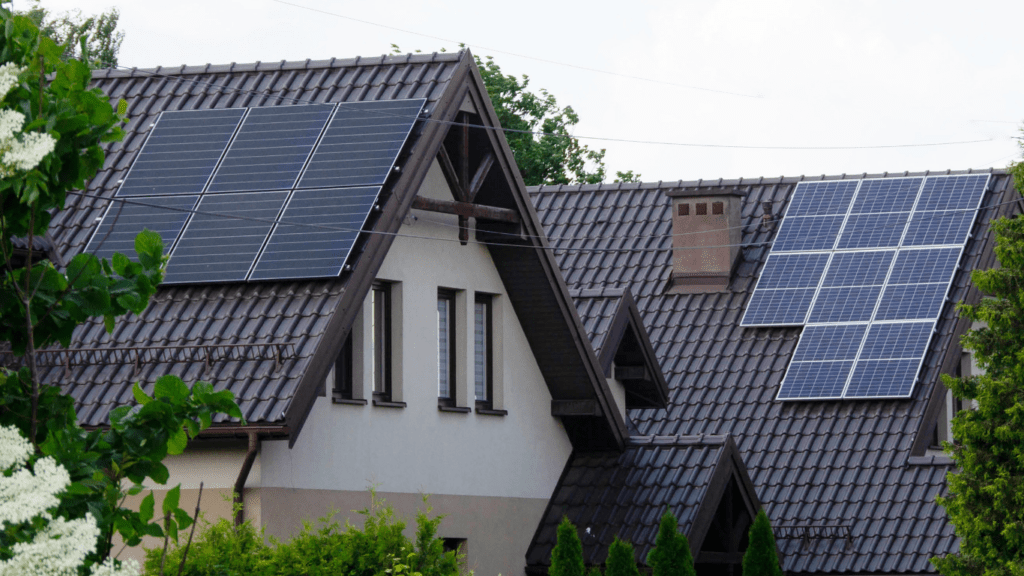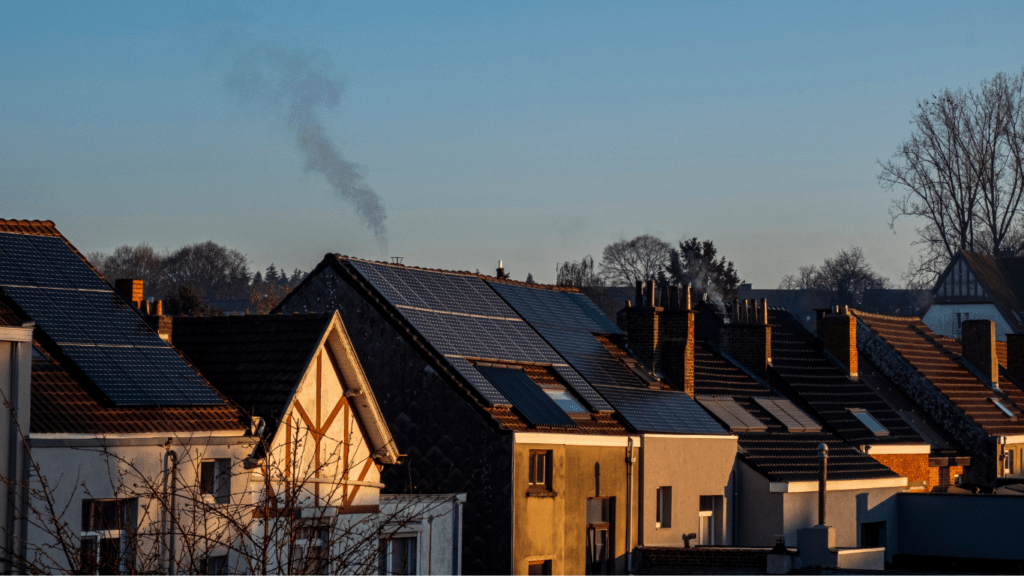Understanding Sustainable and Green Homes
Sustainable and green homes prioritize eco-friendly materials and practices. This means utilizing renewable resources, minimizing waste, and ensuring energy efficiency. Features like:
- solar panels
- high-efficiency heating systems
- water-saving fixtures
are common in these homes. Sustainable materials can include bamboo flooring, reclaimed wood, and recycled metal.
Certification programs like LEED and ENERGY STAR guide builders in creating green homes. These certifications ensure that homes meet specific energy efficiency and environmental standards. For example, LEED certification covers areas such as site development, water savings, and indoor environmental quality. ENERGY STAR certifications focus on reducing energy usage through better insulation, windows, and appliances.
Green homes offer financial benefits too. Homeowners can save on energy bills and sometimes qualify for tax incentives or rebates. Data shows that energy-efficient homes can save homeowners 20% to 30% on utility bills. Additionally, green homes can have higher resale values due to their lower operational costs and growing market demand.
Adopting sustainable practices also reduces a home’s carbon footprint. Efficient energy use and renewable energy sources like solar power reduce greenhouse gas emissions. Using sustainable materials lessens the environmental impact of construction. Minimizing waste in home building and everyday living contributes to a healthier planet.
In the context of health, green homes provide benefits like better indoor air quality and natural light. Proper ventilation systems and non-toxic building materials reduce allergens and pollutants. Incorporating large windows and skylights maximizes natural light, improving mental well-being and reducing the need for artificial lighting during the day.
Sustainable and green homes mark a significant shift in the housing market. Understanding their benefits and features helps potential homeowners make informed decisions. This growing movement towards eco-friendly living not only lowers costs but also supports environmental conservation.
Key Features of Sustainable Homes
Sustainable homes offer practical solutions for minimizing environmental impact. They provide significant benefits in terms of energy, water use, and material sustainability.
Energy Efficiency
Energy efficiency stands at the core of sustainable homes. These homes feature energy-efficient appliances (e.g., refrigerators, washing machines) that reduce consumption. Insulation (e.g., fiberglass, cellulose) ensures minimal heat loss, and LED lighting uses less power. Solar panels (e.g., photovoltaic cells) on rooftops convert sunlight into electricity, lowering utility bills. Smart thermostats (e.g., Nest, Ecobee) optimize heating and cooling for comfort and savings.
Water Conservation
Water conservation is another hallmark of sustainable homes. Low-flow fixtures (e.g., faucets, showerheads) reduce water use without compromising performance. Rainwater harvesting systems collect rainwater for irrigation or flushing toilets, reducing reliance on municipal water. Dual-flush toilets (e.g., Toto, Kohler) offer different flush options for liquid and solid waste. Xeriscaping, a landscaping method using drought-resistant plants, reduces outdoor water needs.
Use of Renewable Materials
- The use of renewable materials contributes to the sustainability of green homes.
- Bamboo flooring, known for its rapid growth and renewability, replaces traditional hardwood.
- Recycled materials (e.g., glass, metal) are used in countertops and insulation.
- Sustainable lumber from responsible forestry practices ensures the continuous supply of wood.
- Non-toxic paints (e.g., low-VOC, zero-VOC) improve indoor air quality and reduce environmental toxins.
- Sustainable homes deliver environmental and financial benefits, making them appealing to modern homeowners.
- Through energy efficiency, water conservation, and renewable materials, they foster a healthier lifestyle and a sustainable future.
Benefits of Green Homes

Green homes offer multiple advantages, appealing to homeowners looking to combine sustainability and financial benefits.
Environmental Impact
Green homes significantly reduce environmental footprints. Eco-friendly materials like bamboo and recycled products reduce waste. Energy-efficient appliances, insulation, and solar panels minimize electricity consumption, lessening the dependency on non-renewable resources. Water conservation systems, including rainwater harvesting and low-flow fixtures, ensure efficient water use. These practices contribute to lower greenhouse gas emissions, promoting a healthier planet.
Financial Savings
Green homes provide substantial financial savings. Energy-efficient features such as LED lighting and smart thermostats lead to lower utility bills. Installing solar panels further reduces electricity costs, sometimes generating surplus energy for additional savings. Many state and federal programs offer tax incentives and rebates for energy-efficient home improvements. Over time, these savings offset initial investment costs, increasing the home’s resale value and providing long-term financial benefits.
Health and Well-being
Green homes improve health and well-being by enhancing indoor air quality. Using non-toxic, low-VOC (volatile organic compounds) materials reduces exposure to harmful chemicals. Proper ventilation systems and natural lighting improve indoor air and comfort levels. Mental health benefits from environments designed with natural elements and sustainable practices contribute to overall well-being. By prioritizing health-focused design, green homes provide a healthier living space for residents.
Challenges and Barriers
Despite the benefits of sustainable and green homes, several challenges hinder their broader adoption.
Initial Costs
The upfront costs for building or converting to a green home can be substantial. High-quality eco-friendly materials and advanced technologies such as solar panels, energy-efficient appliances, and smart home systems often carry a higher price tag. While long-term savings on energy bills and maintenance offset these costs, the initial investment can be a significant barrier for many homeowners. For example, installing solar panels can cost between $15,000 and $25,000, depending on the home’s size and energy needs.
Regulatory Hurdles
Navigating the regulatory landscape for sustainable homes can be complex. Building codes, zoning laws, and permitting processes vary widely between regions and may not always favor green construction practices. For instance, some areas have restrictive regulations on solar panel installations or rainwater harvesting, creating additional hurdles. Aligning a project with these varied regulations can increase both the time and cost of construction, deterring some potential adopters.
Awareness and Education
A lack of awareness and education about the benefits and logistics of green homes also presents challenges. Many homeowners and builders aren’t fully informed about the long-term financial benefits, tax incentives, and environmental impact of sustainable homes. This knowledge gap extends to understanding how to properly implement green technologies and materials.
For instance, homeowners may not realize that using bamboo flooring and recycled materials can significantly reduce their home’s carbon footprint. Bridging this gap requires comprehensive educational initiatives and resources to inform and guide potential green home adopters.
Innovations in Sustainable Housing
Innovations in sustainable housing are transforming how we approach building and maintaining homes. These advancements prioritize efficiency and eco-friendliness.
Smart Home Technology
Smart home technology enhances sustainable living by automating energy management. Smart thermostats and lighting systems reduce energy consumption by learning user habits and adjusting settings accordingly. Smart plugs and appliances monitor and optimize electricity use, further reducing waste. Additionally, water usage can be managed through smart irrigation systems and leak detectors, conserving this vital resource.
Sustainable Building Materials
Sustainable building materials reduce environmental impact from construction. Materials like reclaimed wood, recycled metal, and bamboo offer renewable alternatives to traditional options. Insulated concrete forms and structural insulated panels improve energy efficiency by providing superior insulation. Green roofs and living walls promote biodiversity, improve air quality, and reduce urban heat island effects.
Renewable Energy Sources
Renewable energy sources significantly enhance the sustainability of green homes. Solar panels provide a clean source of electricity, reducing reliance on fossil fuels. Wind turbines and geothermal heating systems offer additional renewable energy options, varying by location and climate. Battery storage systems ensure that excess energy generated can be stored and used when production is low, ensuring a consistent energy supply throughout the year.
The Future of Green Homes
The future of green homes is promising, with advancements in technology and design driving this trend. Let’s dive into emerging trends and how policies shape the landscape.
Trends and Predictions
Sustainable homes are increasingly incorporating smart technology to manage energy use. For instance, smart thermostats and energy-efficient lighting systems optimize energy consumption. Green roofs and walls, made of vegetation, improve insulation and reduce urban heat islands.
Renewable energy sources like solar panels and wind turbines are becoming more accessible and affordable. Modular and prefabricated homes, constructed off-site using sustainable materials, reduce waste and speed up construction. Energy storage systems are gaining traction, allowing homes to store excess renewable energy for later use.
Policy and Government Initiatives
Governments worldwide are implementing policies to encourage the adoption of green homes. For example, the US offers tax incentives for energy-efficient home improvements and renewable energy installations. The European Union has set ambitious targets for carbon neutrality by 2050, driving stricter building codes and standards.
Green building certification programs like LEED and ENERGY STAR are supported by various government entities, promoting energy-efficient practices in construction. Local governments are introducing zoning laws favoring sustainable developments and providing grants for green home projects. Regulatory frameworks are evolving, making it easier for homeowners to incorporate sustainable features in their homes.


 Ron Wilson has played a vital role in the establishment of Villa Estates Luxe, bringing his expertise in property management and investment strategies to the project. His guidance has been invaluable in developing comprehensive buying guides that empower potential villa owners to make informed decisions in a competitive market. Ron's in-depth knowledge of market dynamics has informed the platform's analysis and reporting, allowing users to navigate complex real estate trends with confidence. His commitment to excellence and dedication to educating clients have not only enhanced the platform’s credibility but have also established Villa Estates Luxe as a go-to source for industry insights and investment strategies in the luxury villa sector.
Ron Wilson has played a vital role in the establishment of Villa Estates Luxe, bringing his expertise in property management and investment strategies to the project. His guidance has been invaluable in developing comprehensive buying guides that empower potential villa owners to make informed decisions in a competitive market. Ron's in-depth knowledge of market dynamics has informed the platform's analysis and reporting, allowing users to navigate complex real estate trends with confidence. His commitment to excellence and dedication to educating clients have not only enhanced the platform’s credibility but have also established Villa Estates Luxe as a go-to source for industry insights and investment strategies in the luxury villa sector.